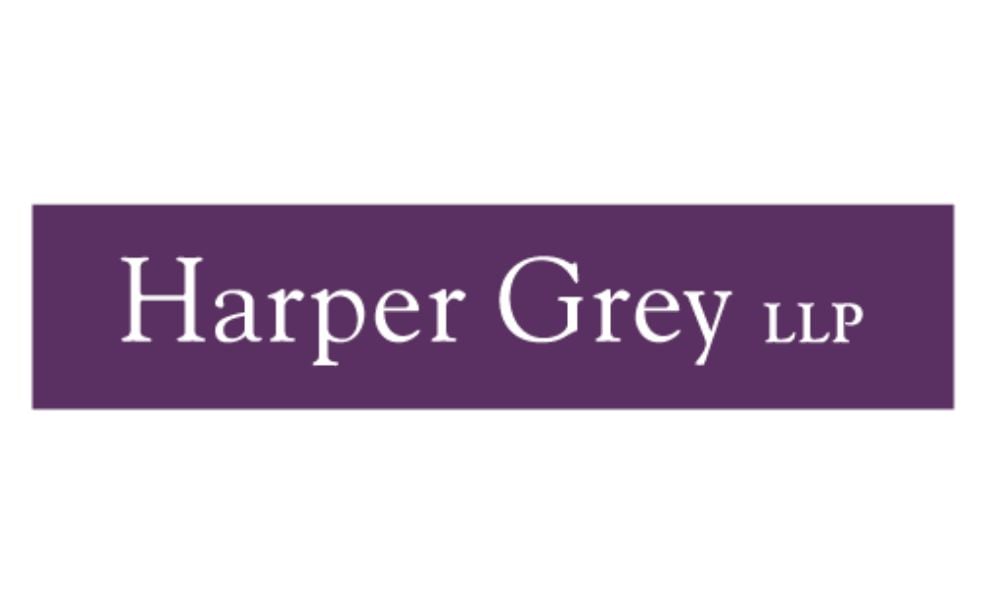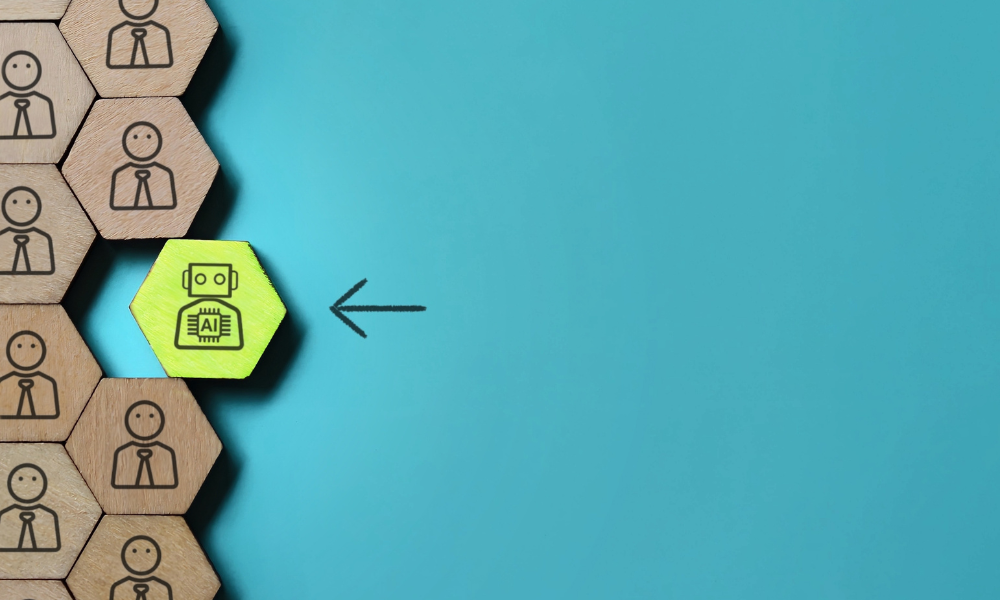Artificial intelligence or AI has been gaining popularity and is touted by many as a superstar game changer that can reduce or eliminate many tasks and positions in the workplace. At first blush, like a fresh young candidate, AI interviews well – it’s impressive. But while AI has its place in legal practice, and can offer increased speed and efficiency, it also brings with it caution and limitations.
In sitting down to write my thoughts of AI in legal practice, I was tempted to take to AI to do the heavy lifting for me. Should I ask AI to tell me what it thinks of itself? I resisted the temptation.
While Gen Zs were raised with the internet and social media, the generations before remember a simpler time. I remember typing up my high school essays on a typewriter, and the days of dial up internet while in university. Shortly thereafter came the rise of faxes and the resistance to moving to the iPhone from the Blackberry. Life is about change and the law is no different.
The law is an ever-evolving landscape, and rightfully so, as it needs to keep pace with society. At the same time, lawyers and law firms can be resistant to changing the way they practice and allowing technology in. It wasn’t too long ago that service of documents by email was not permitted by the Rules and now it’s common place. Before COVID (and even initially during COVID) most lawyers would object to conducting a virtual discovery, let alone a virtual trial – but we evolved, and we’re better for it. Resist as we may, AI technology is here and moving the needle again, but how does AI fit into legal practice and the rule of law?
According to the Thomson Reuters 2024 State of the Canadian Law Firm Market report (in partnership with the Canadian Bar Association), 26% of law firm lawyers say they are already using generative AI in their practice. Another 12% said they plan to start using it within the next year, with an additional 12% aiming to do so over the next three years. Soon, most lawyers will be using AI.[1]
Everyone’s talking about automation, predictive analytics, and machine learning like they’re magic buzz words that will suddenly transform the entirety of the legal profession. But for years law firms have been finding ways to automate and improve the way we practice law and bring increased efficiency. At Neinstein, we’ve always engaged in technology to improve our firm’s efficiency, so engaging in AI was an organic evolution.
At first glance, AI seems like a game changer for lawyers. It can sift through mountains of documents and medical records, summarize the information, create a chronology, draft documents, and even point out the strengths and weaknesses of your case. Does this mean the end of late nights spent on legal research, document review or drafting? I’m not so sure.
In the last few years, Neinstein has continued to engage with AI as part of our toolkit to continue to increase our efficiency and productivity. We did our homework. And we soon came to realize that not all AI, and not all AI products, are created equal. For our practice areas of personal injury, medical malpractice and mass torts, where cases are complex and have volumes of documentary evidence, AI has been helpful – even great at times. But there are limitations.
Our medical records are not always nicely typed out – there are handwritten records that are almost impossible to decipher, flowsheets, charts and decision trees and of course there are fetal heart rate strips, ECGs and other medical imaging. The AI can’t always process and analyze the full medical records – leading to limitations and issues with the reliability of the AI generated answer.
With most AI systems, the AI reviews the texts, usually removing images, charts and tables from their scope. Then it determines the key information and condenses it for you. But how does it know what’s important? In legal practice, the AI needs to be taught or trained on what to look for, it doesn't come pre-equipped with that knowledge. You have to be careful in relying too heavily on a “bot” to review your case as you don’t know which documents (or parts of the file) that the AI overlooked in forming its response. If you don’t know your case, can you know whether the AI’s answer is complete and accurate?
When it comes to the pros of AI, speed and efficiency is where AI really shines. Pulling out specific information from the documents, creating a timeline or chronology, summarizing the document and being able to chat against the document with deeper searches will definitely reduce time spent and increase productivity.
When it comes to the cons in a legal context, confidentiality is the biggest risk, with accuracy or errors coming in a close second. Rounding it out are lack of complex analysis, over-reliance, cost and potential job elimination concerns.
In a legal practice, the use of AI, particularly open AI, demands exceptional caution, especially when handling confidential or privileged information. In open AI programs, anything you put into the program can be used by the AI host. Best practices would be to purchase a closed AI program, with proper security features to prevent data breaches and security risks. Also, when looking into new software, be prepared to put in the work to teach the AI so it aligns with your practice. Be careful with standard off-the-rack AI solutions for law firms – you will likely need to get a customized model, with an AI company that’s willing to train and program its AI to meet your needs.
AI can be a great assistant, but what happens when it fails and gets the answer wrong? AI-generated false information is referred to as a “hallucination.” In Zhang v. Chen, a case from the Supreme Court of British Columbia, a lawyer submitted two AI-generated cases in their materials that simply didn’t exist.[2] The lawyer ultimately caught their error and withdrew their reliance on the cases before the hearing, but not before opposing counsel spent hours looking into it. The judge in that case ordered that the lawyer was personally responsible for the opposing party’s costs. A 2024 Stanford University assessment and report found that when general use AI tools (such as Chat GPT) are used in legal contexts, the hallucination rates are between 58% and 82%.[3] Even legal research AI systems (such as Lexis+ AI, Westlaw AI-Assisted Research, and Ask Practical Law AI) still produce errors between 17% and 33% of the time.[4] Who is liable when a lawyer relies on a wrong AI generated response? Food for thought.
The law isn’t just about crunching numbers and analyzing text. At its core, the practice of tort law is about people, ingenuity and strategy. In those areas, AI just can’t compete with humans – at least not at my firm. At Neinstein, our core values revolve around a client-centered approach; we value our relationships, being empathetic advisors, and practical problem solvers. Our greatest asset is our people! It’s about understanding the nuances of a client’s experience, and the very real (and devastating) impact their injury had on their life. No AI program – no matter how advanced – can find practical solutions to our client’s unique and non-coded problems. The AI can’t come up with a novel legal argument, advocate for real change or find ways to pioneer new legal pathways. While some may say that AI will lead to job elimination, in my view, the heart of a great legal practice is the people, and I don’t see this technology changing that.
That’s why our approach to AI is measured. Our core values, commitment to building strong relationships, and business model all remain steadfast and unchanged. We use AI to improve efficiency where it makes sense for us, but it certainly is not a substitute for the judgement, experience or advocacy that define a great legal practice. Understanding its limitations, and proactively mitigating risks will be key to successfully integrating AI into legal practice. The future of AI in law is still unfolding, and we have the opportunity to shape it. How will you use AI to enhance your practice – without losing sight of what makes your law firm unique?
***

Rose Leto is a Partner at Neinstein Personal Injury Lawyers LLP. She focuses on personal injury and complex medical malpractice litigation. Rose is known for her thorough and robust advocacy and skillful negotiation. As an integral member of the leadership team at Neinstein, Rose is responsible for the firm's practice innovation. She provides direction for all lawyers and staff members at the firm and is a source of knowledge and trust amongst her peers.
[1] Thomson Reuters Institute, “2024 State of the Canadian Law Firm Market,” Thomson Reuters (2024), https://www.thomsonreuters.com/en-us/posts/wp-content/uploads/sites/20/2024/03/2024-State-of-Canada-Law-Firms-Report_English.pdf.
[2] Zhang v Chen, 2024 BCSC 285
[3] Varun Magesh et al., “Hallucination-Free? Assessing the Reliability of Leading AI Legal Research Tools,” (2024) arXiv (Cornell University), May 30, 2024, https://doi.org/10.48550/arxiv.2405.20362
[4] Magesh, AI Legal Research Tools, 2





